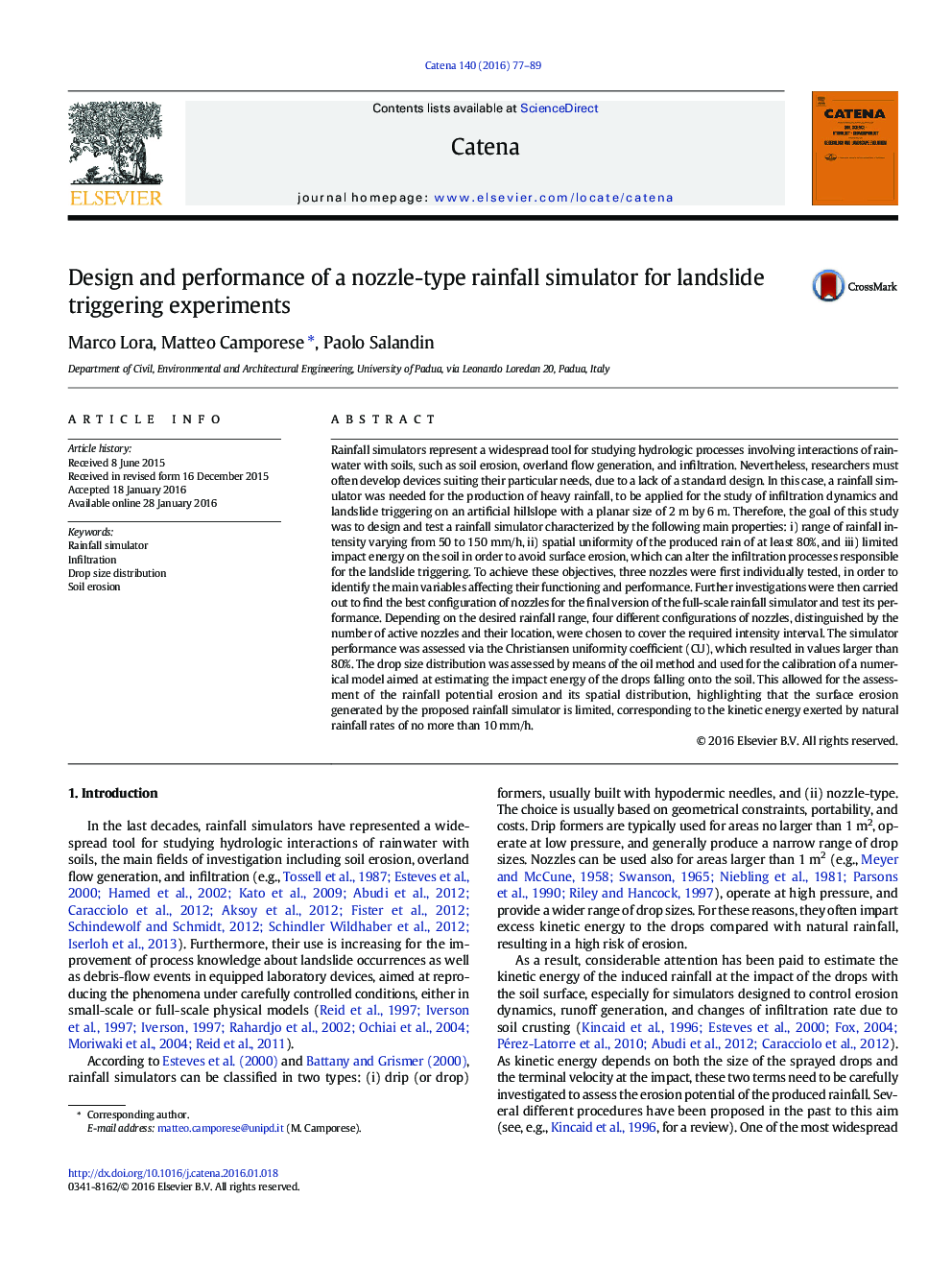| کد مقاله | کد نشریه | سال انتشار | مقاله انگلیسی | نسخه تمام متن |
|---|---|---|---|---|
| 4570920 | 1629212 | 2016 | 13 صفحه PDF | دانلود رایگان |
• A nozzle-type rainfall simulator was developed for landslide triggering experiments.
• The simulator can generate rainfall rates varying from 50 to 150 mm/h.
• The simulator can obtain uniformity coefficients larger than 80%.
• The proposed simulator is characterized by low soil erosion potential.
Rainfall simulators represent a widespread tool for studying hydrologic processes involving interactions of rainwater with soils, such as soil erosion, overland flow generation, and infiltration. Nevertheless, researchers must often develop devices suiting their particular needs, due to a lack of a standard design. In this case, a rainfall simulator was needed for the production of heavy rainfall, to be applied for the study of infiltration dynamics and landslide triggering on an artificial hillslope with a planar size of 2 m by 6 m. Therefore, the goal of this study was to design and test a rainfall simulator characterized by the following main properties: i) range of rainfall intensity varying from 50 to 150 mm/h, ii) spatial uniformity of the produced rain of at least 80%, and iii) limited impact energy on the soil in order to avoid surface erosion, which can alter the infiltration processes responsible for the landslide triggering. To achieve these objectives, three nozzles were first individually tested, in order to identify the main variables affecting their functioning and performance. Further investigations were then carried out to find the best configuration of nozzles for the final version of the full-scale rainfall simulator and test its performance. Depending on the desired rainfall range, four different configurations of nozzles, distinguished by the number of active nozzles and their location, were chosen to cover the required intensity interval. The simulator performance was assessed via the Christiansen uniformity coefficient (CU), which resulted in values larger than 80%. The drop size distribution was assessed by means of the oil method and used for the calibration of a numerical model aimed at estimating the impact energy of the drops falling onto the soil. This allowed for the assessment of the rainfall potential erosion and its spatial distribution, highlighting that the surface erosion generated by the proposed rainfall simulator is limited, corresponding to the kinetic energy exerted by natural rainfall rates of no more than 10 mm/h.
Journal: CATENA - Volume 140, May 2016, Pages 77–89
